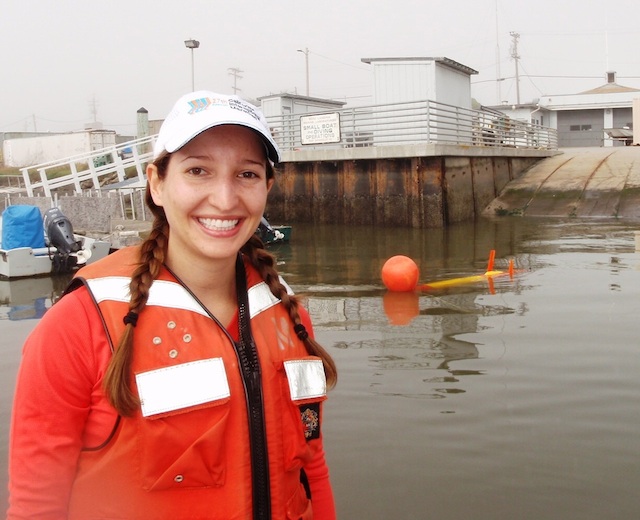By Diane Wyse, Physical Oceanography Lab
This summer I am working as an intern at MLML’s neighboring marine science and engineering institution, the Monterey Bay Aquarium Research Institute. Through generous support of the Friends of Moss Landing and the Gashler family, I am working on the Drew Gashler Internship with Dr Jim Bellingham in the Long-Range Autonomous Underwater Vehicle (LRAUV) lab.

The primary focus for my internship project is analyzing data from a laser sensor (the Laser In Situ Scattering and Transmissometry, or LISST) that detects the particle sizes of plankton via forward scattering on 32 channels. The objective is to test whether differing combinations of the 32 channels can be used as surrogates for chlorophyll and fluorescence, as it relates to my interests in phytoplankton bloom dynamics. Additionally, Dr Bellingham and I are investigating whether we can identify species of zooplankton the AUV encounters in Monterey Bay based on specific combinations of the LISST channel particle size distributions.

Though I am working in the LRAUV lab, the LISST sensor is actually mounted on the Dorado upper-water-column autonomous underwater vehicle (AUV), which is larger and performs shorter missions than the LRAUVs. The Dorado AUVs perform missions over a couple days, while the LRAUVs can be deployed to collect data for nearly a month! The missions vary in duration and purpose, and it is really exciting to have both of these types of AUVs available for data collection and processing. One of the cool features of the Dorado vehicle is the gulper sampling system, which through a sampling algorithm designed by MBARI Senior Research Specialist Dr Yanwu Zhang, samples 1.8L of water autonomously when the desired combination of oceanographic conditions are detected by the vehicle. Imagine being able to fill ten 2L soda bottles with water samples for lab analysis without donning pounds of neoprene! Ok, as a research diver who appreciates the importance and value of blue-water sampling, I would jump at that opportunity, however the Dorado’s sampling technique is also very exciting. The sensor suite and algorithm for gulper sampling on the Dorado vehicle allows us to combine continuously recorded oceanographic data for temperature, salinity, depth, nitrate, LISST, and more with the water samples that are then analyzed for plankton species identification and abundances in the lab at MBARI.
The internship has been, and continues to be a fantastic learning experience and a great opportunity to apply the oceanographic data analysis and research skills I have developed at MLML over the past two semesters. My internship experience at MBARI has been full of amazing marine science, engineering, exploration, and outreach opportunities, which I look forward to sharing in the weeks to come!

